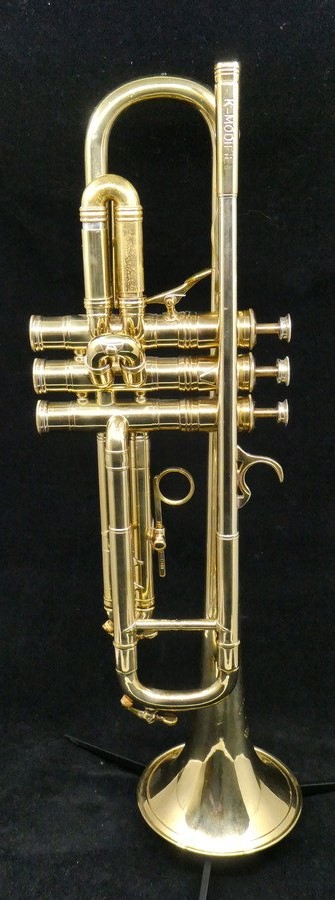New to my collection
-
I love the 1952 silver plate Selmer Paris medium bore Bb I purchased from
ACB in 2016 and now I have added a companion in this gorgeous 1959
Selmer Paris 24B K-Mod medium large bore Bb in lacquer.

This is a honey with a rich warm tone and will serve as a backup to my Manchester Brass band horn. It is in beautiful condition. Of course it came from ACB.
-
This post is deleted! -
Very Nice!!!!!
-
Interesting bell rim. Likely a significant influence on the tone.
-
Lovely horn George, enjoy.
Dr Go, known as the French rim, I wonder why?, the later Selmers, Radial, Deville, 700 series and later all had a conventional roll.
Regards, Stuart.
-
@stumac said in New to my collection:
Lovely horn George, enjoy.
Dr Go, known as the French rim... all had a conventional roll.
Ummmm.... Love French pastry! Even conventional rolls! Ummmmm.....
-
@stumac said in New to my collection:
Lovely horn George, enjoy.
Dr Go, known as the French rim, I wonder why?, the later Selmers, Radial, Deville, 700 series and later all had a conventional roll.
Regards, Stuart.
I've also heard it referred to as a tone ring.
-
I love it! Vintage horns are so cool.
-tj
-
@stumac said in New to my collection:
Dr Go, known as the French rim.
Don't say French rim when a man's down.
-
"French Bead" is a flattened rolled end to the bell flare. It is sometimes accomplished by folding the metal in on itself (quite hard to do), but more often with a flat ring in place of the usual wire. Bach uses an interesting wire for the Artisan French Bead rim that is a half-round wire in the cross-section. (Not sure where they get that)
"Tone Ring" is a term made popular by companies like FE Olds for adding what for centuries has been called a garland. This is a separate piece of metal generally that is pinched into the rim bead - often nickle for color contrast. There are complex acoustical formulas for installing these such that they float above the bell curve (not sure how valid they are personally) - though this one appears to simply be laminated onto, and of matching brass.
Garlands were commonplace on continental brass instruments for several hundred years (long before valves) and appear on most historic French, German, Austrian, etc. natural and baroque trumpets - extending into the early Austrian, Bohemian and Saxon cornets.
-
-
Wow, what a beautiful trumpet!!

-
The bead of the Selmer is not an added piece, just the edge of the bell rolled back and formed into shape. Selmer were not the only ones to have this bead, my Buffet-Crampon has a similar one.
Regards, Stuart
-
@stumac said in New to my collection:
The bead of the Selmer is not an added piece, just the edge of the bell rolled back and formed into shape. Selmer were not the only ones to have this bead, my Buffet-Crampon has a similar one.
Regards, Stuart
I have not looked at one in person. I would like to see if there are clues as to how it was done.
That would be quite a task to accomplish since the metal folded back would have been stretched out wider on the mandrel and would have to be compressed back to a smaller ring in the process - which is why inserting a ring of flat stock and pinning it with the rolled edge bead is the more typical approach for both free-standing garlands and applied garland-like trim.
-
@Dr-GO said in New to my collection:
Interesting bell rim. Likely a significant influence on the tone.
The Selmer K-Mod had the same.